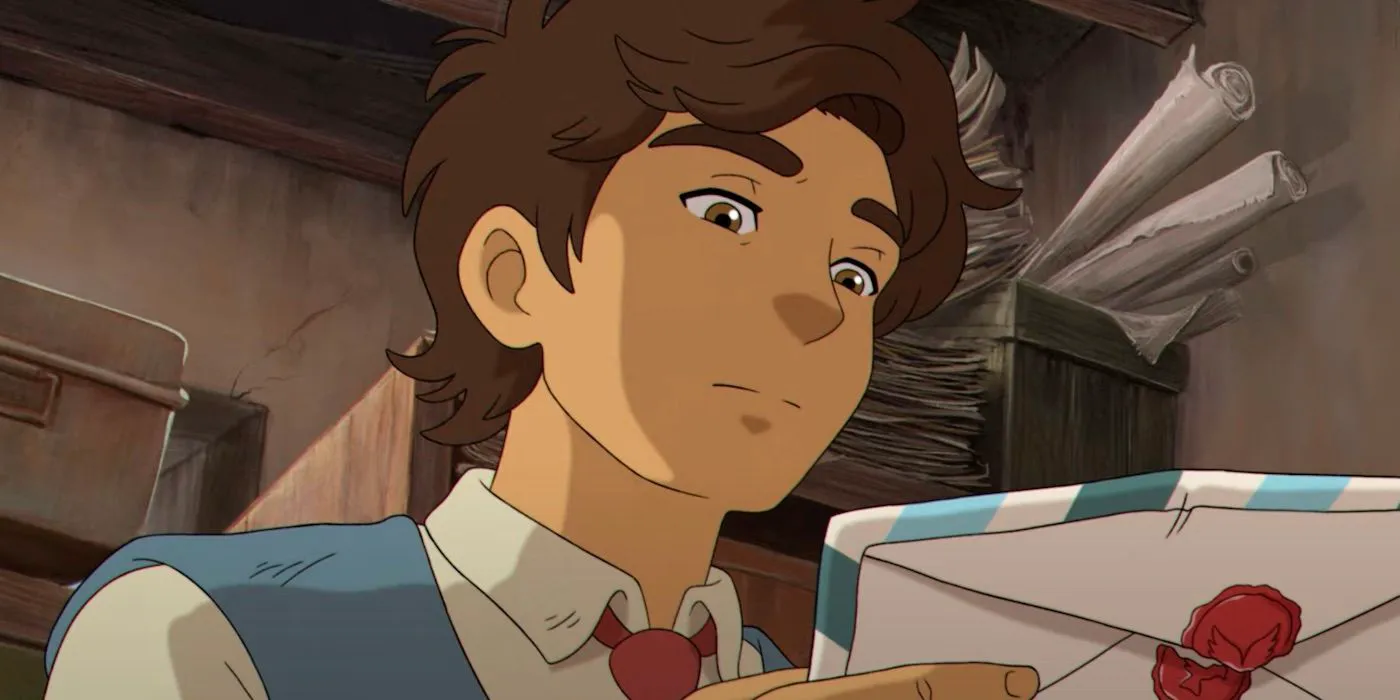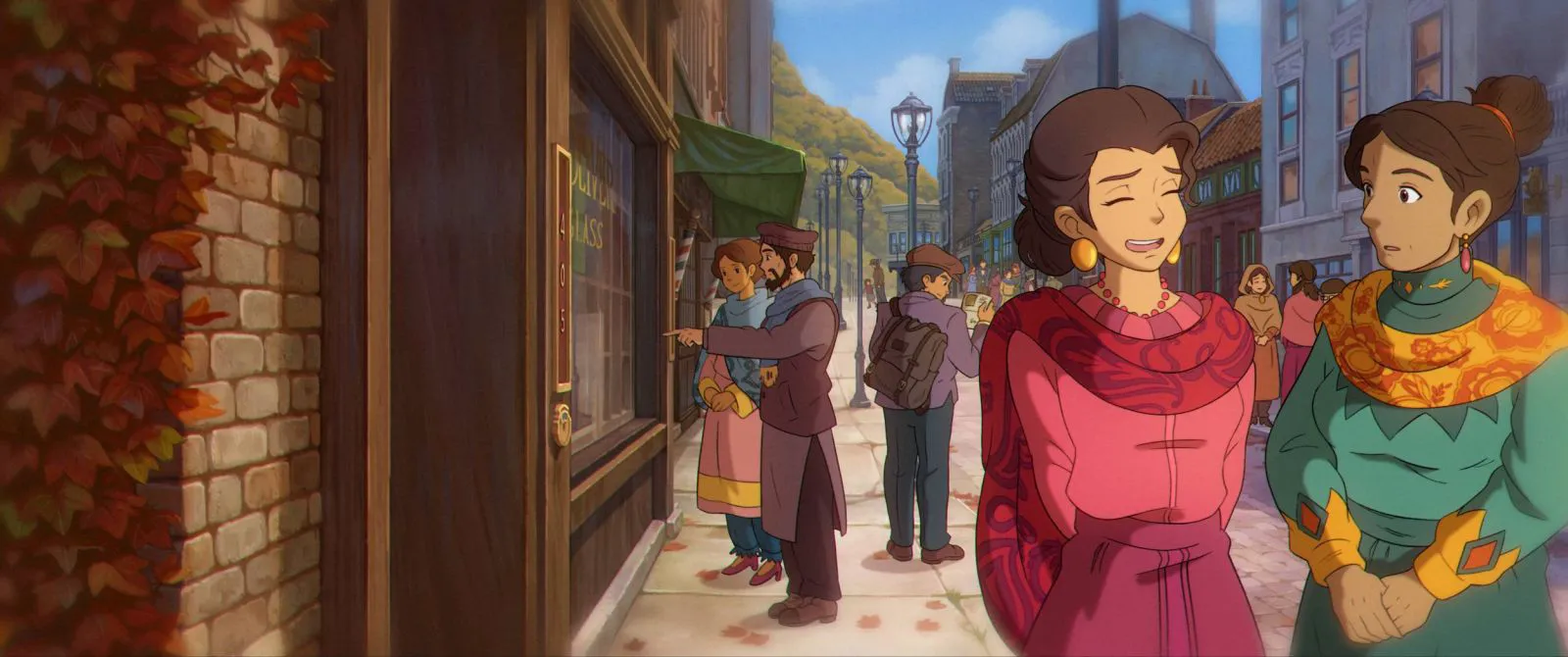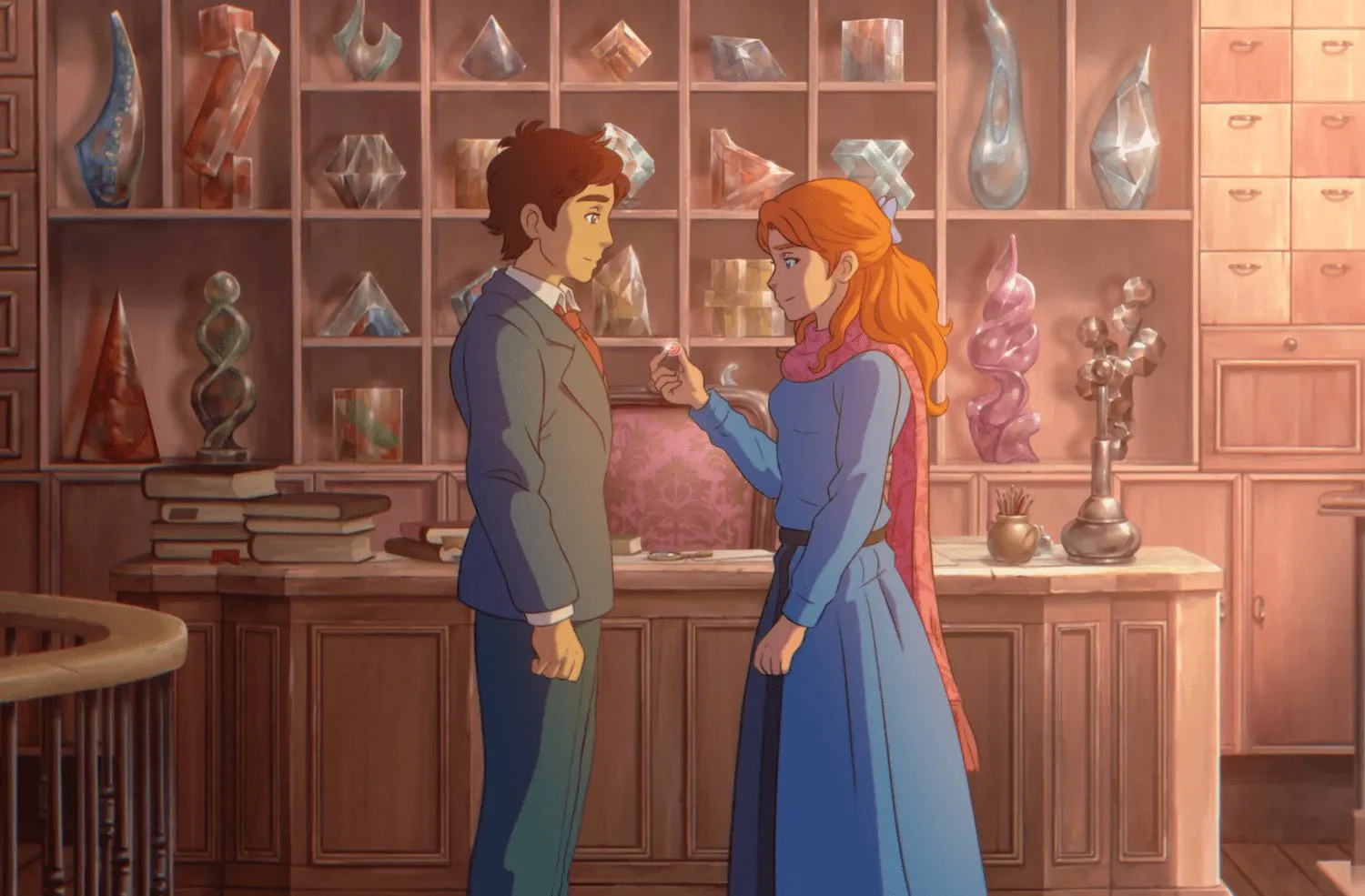The Glassblower: A Pakistani Animated Gem Inspired by Miyazaki
For years, Thomas Oliver’s glass shop has been a Waterfront fixture. Thomas, known for his kind nature, inherited the shop from his father. His father had once welcomed a young woman who became the first he knew who could tame the fiery dance of molten glass. Thomas fell in love, and they had a son, Vincent. Sadly, his mother’s poor health cut their happiness short, leaving Thomas to raise Vincent alone, hoping to pass on his craft. But war came, bringing soldiers. Thomas, a pacifist, openly despises those who take up arms, a sentiment he instilled in Vincent. However, Vincent’s world shifts when he meets Alliz, a colonel’s daughter.

Scene from “The Glassblower”
At first glance, you might mistake this for Japanese animation. That’s understandable. Usman Riaz, the Pakistani director of “The Glassblower,” has been a lifelong anime fan, especially of Hayao Miyazaki and Studio Ghibli. Riaz conceived the idea in 2014, but no Pakistani studio did 2D animation. To realize his vision, Riaz, his wife Mariam, and his cousin Khizer crowdfunded their own studio, Mano Animation Studios, named after Riaz’s cat. (He later learned “mano” means “hand” in Spanish, a fitting coincidence.) “The Glassblower” is Pakistan’s first 2D animated feature film.
A Reflection of Conflict
The Waterfront, the setting for the film, is a city in an unnamed country, but it strongly resembles Riaz’s childhood Pakistan, growing up amidst the escalating conflicts after 9/11. Military drills, air raid sirens, curfews, and checkpoints were part of his daily life in Karachi. Yet, Riaz refused to let fear dictate his life, immersing himself in cinema, theater, and music.

Scene from “The Glassblower”
“The Glassblower” contains autobiographical elements. Alliz is inspired by Riaz’s grandmother, a colonel’s daughter. But the film is mostly about Riaz himself, exploring the role of a pacifist in wartime. Should someone who rejects violence go against their nature and join the army, or should they continue their work – writing, playing music, creating intricate glass art? Thomas is repulsed by the idea of causing death, even to those who threaten his city. Alliz, a talented violinist, points out that Vincent can create only because others protect him. Colonel Amaro sees the army not as a force of death, but as a way to protect his family from perceived enemies. Vincent grapples with the artist’s role as bombs explode nearby.

Scene from “The Glassblower”
A Story of Choices
The director avoids taking sides, showing that everyone involved in the conflict suffers. Riaz tells a complex story, seamlessly shifting between present and past, highlighting clues, and lingering on the mesmerizing glassmaking process. It’s a story about ordinary people and how the world forces them to make difficult choices.
Homages and Magic
Like the sea in Miyazaki’s “Ponyo,” which transforms into giant blue fish, sand is a key element in “The Glassblower.” Thomas and Vincent create their glass figures from it. Near the water, Vincent encounters a djinn, reminiscent of Miyazaki’s soot sprites and kodama. The djinn isn’t just a vision; it plays a crucial role, adding a touch of magical realism.
An Open Ending
The film’s ending is risky. Some may find it rushed and ambiguous. “The Glassblower” doesn’t offer easy answers; it invites viewers to choose their own. Vincent and Alliz are frozen in a space of glass figures, red roses, falling ash, forgotten graves, violin music, molten glass, and unanswered letters. But who says the story ends there?